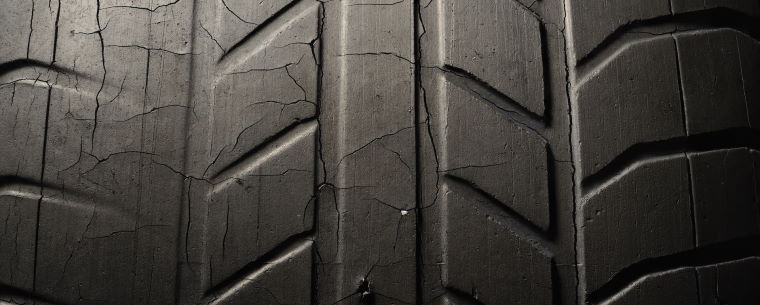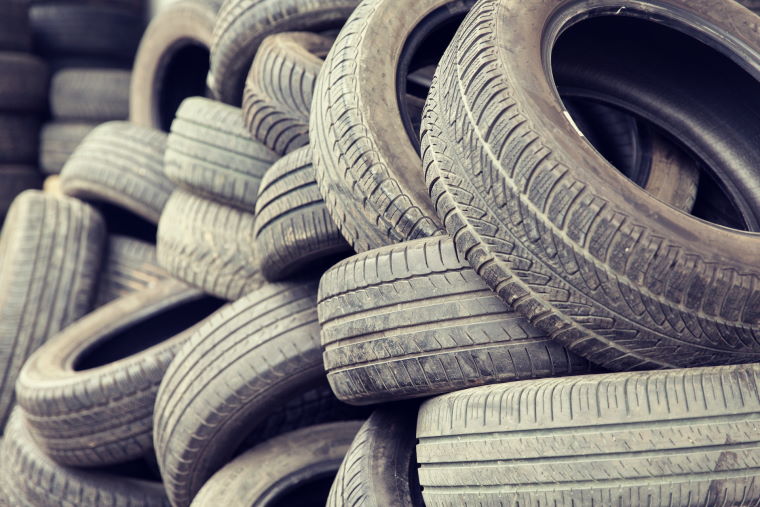Do Car Tyres Have a Use By Date?
Bradley Jando | Thursday 7th October 2021 4:17pm

The simple answer to this question is ‘no’, car tyres don’t technically have a certified expiration date — but that doesn’t mean they last forever. In fact, driving with tyres over a certain age or under a certain quality is extremely dangerous (and also highly illegal).
In this blog, the Kwik Fit team will run you through the ways in which you can monitor your tyres’ age and provide some tips on how to prolong the lifespan of your tyres safely.
So, if you’re concerned about the age of your tyres, or simply want to know about tyre age out of interest, read on.
Date stamps
While car tyres don’t come branded with a ‘Use By’ date, they do have guidance surrounding the age of the tyres in the form of date stamps.
For over forty years now, tyres have been embellished with a date stamp on their sidewall to indicate when they were made. While this stamping system was quite primitive during its origins in the 1980s, nowadays there is a sophisticated 4-digit code in use.
Since the Millenium, four digits have been used to indicate the age of a tyre. In this system, the first two digits represent the week number (1-52), while the second two digits symbolise the year of manufacture. The code ‘2409’ for example, refers to a tyre produced in the 24th week of 2009, just as ‘1214’ represents a tyre made in the 12th week of 2014, and so on…
If your tyres only have a 3-digit date stamp, they should be replaced immediately as this indicates that they were manufactured before 2000.
But what should drivers do with this information?

How to know when your tyres need replacing
As stated before, while there is no technical expiration for tyres, there is a period of optimal performance which, if exceeded, can be dangerous.
As a rough guideline, tyres over six years old need to be monitored carefully to prevent excessive damage and to ensure you’re driving safely. Much research suggests that after six years tyres should be replaced. However, this is purely a precautionary measure. So, we recommend that once tyres reach the 7-10 years mark they are monitored closely and replaced if necessary.
After 7 years, tyres become more susceptible to oxidation and the rubber weakens with age. However, aside from age, there are also more tangible ways to know if your tyres are on the way out:
Tread depth
By law, you must replace your tyres once the minimum tread depth of 1.6mm is reached or exceeded. Driving with a tyre tread depth below 1.6m can land you in hot water with a hefty fine. After this point, your tyres have little to no grip and braking distances are reduced significantly, especially in wet weather, endangering you and your passengers. For more information about measuring tread depth, read our blog here.
Tyre Cracking
A common indicator of ageing tyres is tyre cracking or ‘crazing’ in the sidewall. Over time, UV light from the sun oxidises sidewall rubber causing it to weaken rapidly, especially if tyres are not in motion.
How to prolong tyre lifespan
Practice regular tyre maintenance
The most effective way to prolong your tyre lifespan is to routinely inspect and maintain your tyres. Using tips from our blog, like checking all tyres — including the spare — regularly, checking tread depth, and cleaning your tyres thoroughly, you should be able to elongate the lifespan of your tyres and maintain their performance levels.
Check tyre age when purchasing
Don’t get caught out when purchasing ‘new’ tyres. In many cases, tyres that are labelled ‘new’ could be up to five years old! Based on the German BRV recommendation, there is a ‘5-year rule’ that applies to tyres for sale.
So, check the manufacturer date before purchasing to get the newest tyres possible. This date is a Department of Transportation or ‘DOT’ code of 10/11 digits on the tyre’s internal sidewall, although, recently, tyre manufacturers have been embossing the DOT code on the tyre’s exterior so the wheel doesn’t need to be removed to see it. If your tyre was manufactured after 2000, it should be 11 digits.

If you have any questions about tyre maintenance, age, or replacement, get in touch with the team of experts at your local Kwik Fit centre today, who would be happy to help.
Any facts, figures and prices shown in our blog articles are correct at time of publication.
Featured Articles
Is it Illegal to Drive With One Headlight?
Saturday 19th July 2025
Wondering if it’s illegal to drive with one headlight? Learn about the safety risks and penalties of illegal blown bulbs and why you should fix them promptly.
Air Con in EVs & Hybrids: Experts Answer Your Questions
Monday 30th June 2025
Does air con drain EV batteries? Can you use the air con while charging an electric car? Find out the answers to these questions & more from Kwik Fit’s experts.
Why Is Your Car Making a Noise? Fixes & Tips
Friday 13th June 2025
When your car starts making unexpected noises, it can certainly be quite disconcerting; it may be nothing to worry about, but here’s what you need to know.









